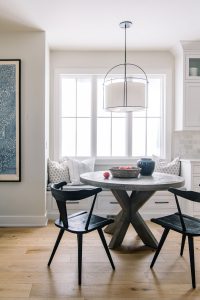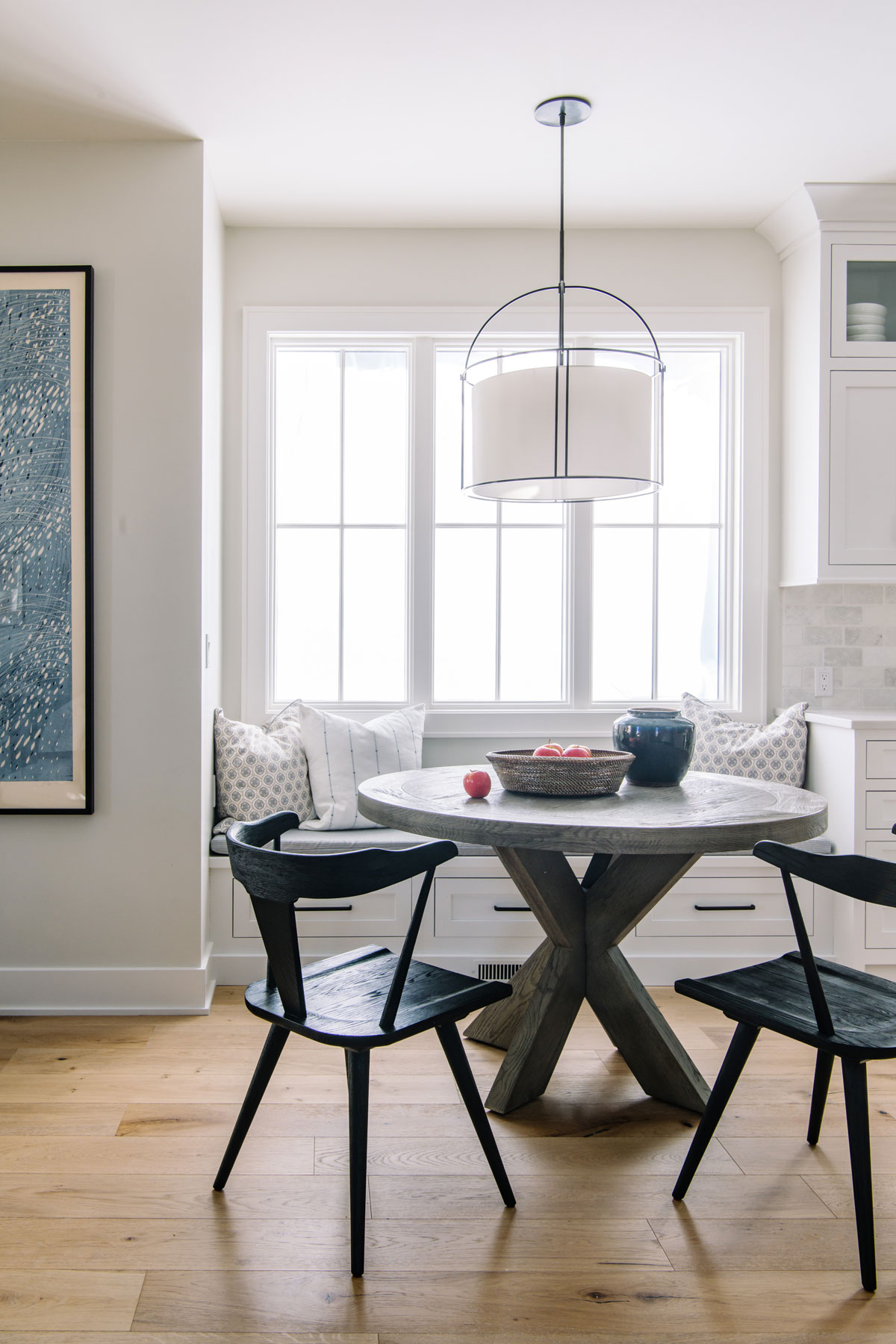
The Not So Big House, A Blueprint for the Way We Really Live, by Sarah Susanka was originally published in 1998. Twenty-two years later, as Americans struggle with a global pandemic, we are spending more time together in our homes than we have in decades. For the last few months, families have been experiencing the nuances of our personal dwellings, for good or bad, all day every day with little relief.
All of this extra time spent inside has brought the contrast between how a home should function vs. how our homes actually function into sharp relief. Many clients are now considering large remodels or even starting over because their homes simply weren’t designed for 24/7 use by all family members at the same time.
At this moment in history, we have an opportunity to rethink the way we approach designing homes for our clients. The overarching theme of Susanka’s Not So Big House is quality trumps quantity when it comes to building a home. Livability is far more important than square footage. However, in order to build or renovate a high quality home, the homeowner needs to shift their mindset around budget, especially in regards to dollars per square foot.
According to Susanka, in order to build Not So Big, the same investment should be used to build a home approximately 30% smaller than originally planned. The extra funds are devoted to architectural character, features, and materials that enhance the livability of the home and improve its ability to support its occupants’ lifestyle.
Chaden Halfhill, founder and CEO of Silent Rivers, believes that a home’s value is intrinsically tied to our health and wellness, our personal narrative, and sensibility. He says, “If we look at housing as an extension of who we are, then the house should serve us. It doesn’t mean a bigger house…it means a house that’s well thought out and embraces who we are and how we live.”
Not So Big goes far beyond simply building a smaller relatively expensive home. The idea of quality does not translate solely into more luxurious finishes or fixtures. Not So Big is more concerned with the quality of the space and how the space functions and provides for the people who inhabit it.
However, one of the major challenges with building Not So Big is the concept of value. Halfhill says, “Not So Big is about learning to live in smaller spaces and putting the investment into the details, finishes and sensibilities. But appraisal systems don’t reward this approach when it comes to financing and resale.”
He believes that the more Not Big Houses that we build as an industry, the more precedents will exist that reinforce the concept of quality over quantity. Furthermore, Not So Big homes may cost the same amount to build as a larger home, but they should require less money to maintain over time due to their smaller footprint and higher quality building materials. A true Not So Big house is built to last and designed for multiple generations to inhabit and enjoy. Unfortunately, the appraisal system does not take maintenance costs into consideration when determining a home’s value.
So why are the Not So Big principles, based in large part on Christopher Alexander’s A Pattern Language published in 1977, not just relevant but imperative for the home building industry in 2020?
The Millennial generation, who are now between 26 and 40, makes up the next wave of home builders. Millennials are much more concerned with quality over quantity, and this value influences the food they eat, the clothes they wear, the trips they take, and the homes they buy or build. They tend to be minimalists and are not interested in superfluous stuff or space.
Millennials and Gen Xers, who are now between 41 and 55 years old, are also more health and environmentally conscious and interested in sustainable and ethical products and materials. Not So Big principles dovetail nicely with this preference as sustainability often comes with a higher price tag. By building smaller, home owners have the luxury of choosing materials from manufacturers that share their values instead of being driven by cost. They may also choose to incorporate hand-crafted elements by local artisans and makers thereby incorporating their values of creativity and community into their homes.
Technology has had a huge impact on lifestyles and homes as well. For example, we no longer need filing cabinets in our offices. We work on laptops instead of large desktop computers. Massive stereo systems are a relic of the past, and televisions mount flush to the wall with all of their components, if any, tucked away in a closet. Books are consumed digitally, turning the display and storage of books into a personal preference rather than one of necessity. We see many new-construction clients opting out of large built-ins with open shelving and remodeling clients ripping out their existing built-ins. Clients are telling us they want less stuff, less clutter, and less work cleaning and dusting.
In conclusion, as architects, builders, and designers, we have a responsibility to take our time during the planning and budgeting process so that we can help our clients understand what they really need from their homes. We must have in-depth conversations and ask thought provoking questions to get to the heart of their needs, so that we can create a home that supports their lifestyle rather than an aspirational version of their lifestyle. Not So Big challenges us to weave the personal narrative and stories of our clients into their homes, which means each house we design and build should be unique to that particular client.
For the client who commits to building Not So Big, we have a duty throughout the process to reign them in when their wish list for square footage compromises their budget for including the necessary character. We also need to question societal norms for custom homes like the dedicated guest room, massive kitchens, multiple living rooms and dining spaces, and each child having their own room. We may need to have tough conversations with our clients, and they may ultimately decide Not So Big is not for them.
At the end of the introduction to the 2008 expanded edition of The Not So Big House, Susanka wrote, “My house fits me perfectly and is unabashedly comfortable. My house feeds my spirit…” Shouldn’t that be the goal for every custom new home: a house that reflects the values, character, and lifestyle of its occupants and empowers them towards their best life?
Article By Jillian Lare
Jillian Lare Interior Design
Office: 515-344-3140
Mobile: 570-954-0771
jillian@jillianlare.com
www.jillianlare.com
